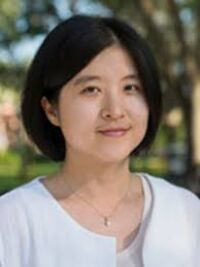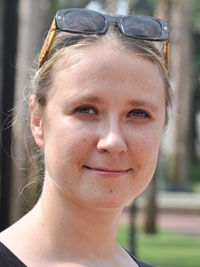The Brown Center invites you to our Faculty Spotlight on Thursday, February 27th at 4:00 PM in the Carlton Union Building’s Lee Garage. The spotlights series is a showcase of research, creative inquiry, and other scholarly engagement of the campus community. Stop by and learn about the research of our talented Stetson community!
Details about the time and place can be found on Stetson’s Event Calendar
We have changed the format this year and will be having two sessions for thirty minutes each.
The two professors participating in this spotlight are:

Dr. Su Young Choi Assistant Professor of Communication and Media Studies
Department of Communication and Media Studies
Authoritarian Communication, Peripheralization, and the Politics of Environmental Hazard
The idea of peripheralization highlights the disadvantaged conditions of marginalized communities (e.g., economic marginality, powerlessness, etc.) as the structural source of the phenomenon that environmentally risky infrastructure tends to be sited in these communities, reinforcing already existing socio-environmental inequality. I propose to regard authoritarian communication as a mechanism of materializing peripheralization at the interactive, relational, and micro-levels. Composed of unidirectional projection, partial absorption, and forceful suppression, authoritarian communication situates local, corporate, and government actors in a way that exploits the impoverished conditions of a marginalized community, subordinates its communal capacity, maintains or even expands peripheralization, and hinders environmental democracy. In this talk I illustrate the concrete dynamics of expanding peripheralization by ethnographically analyzing the local protest of Miryang against the Korean Electric Power Corporation’s construction of a 765,000-volt transmission line connected to accumulative nuclear power plants.
Dr. Su Young Choi is an assistant professor of communication and media studies at Stetson University. She examines media and communication in the context of social movement by employing qualitative methods like ethnography, in-depth interviews, and textual and discourse analysis. She is interested in understanding the relationship between cultural transformation and socio-environmental inequality and injustice. She is currently engaging research project about the emergence of youth-led vegan movement in the context of East Asia.
Dr. Katya Kudryavtseva – Assistant Professor of Art History
Department of Art
The Afterlife of Kazimir Malevich’s Suprematism
My sabbatical research addresses the mechanisms of Malevich’s inclusion into the art history canon, demonstrating that the process of reputation-formation depends on the motivated forces responsible for the canon production, which are impacted by a myriad of factors, such as aesthetic preferences and political positions of art institutions’ agents, art market pressures, and contemporary relevance. My talk will focus on one peculiar aspect of establishing Malevich’s legacy, explaining how the Soviet policies governing the display, exchange, and reproduction of Malevich’s works were impacted by the artist’s rise to the prominence in the West in the 1970s. Indeed, the situation was quite paradoxical: on one hand, Malevich was officially criticized for his bourgeois decadence and his works were removed from public display in the USSR, yet, on the other hand, the Soviet museums were carefully studying the current research and market trends involving this type of art. I will highlight the clever and creative strategies used by the Soviet museums that allowed them to negotiate between the strict governmental restrictions on loaning the works to the Western institutions and their need to maintain professional relationships with these institutions.
Dr. Katya Kudryavtseva specializes in art of the twentieth century with a focus on the intersecting trajectories of art history, politics, art institutions and business and their role in the development of the canon of modern and contemporary art. Her book (under contract with NLO, Moscow), “The Making of Kazimir Malevich’s Black Square,” analyzes the artistic practice of a major figure of modernism, Russian painter Kazimir Malevich (1879-1935), through the metamorphosis of his seminal painting, the Black Square (from the easel painting to a revolutionary emblem, to a signature, and, finally, to a commodity). The book provides detailed analysis of both the artist’s changing attitudes towards politics, revolution and authority, and the way suprematism was reinvested with different meanings and adapted to ideological purposes first by the artist himself, his students, and subsequently by scholars, collectors, dealers and art institutions.

